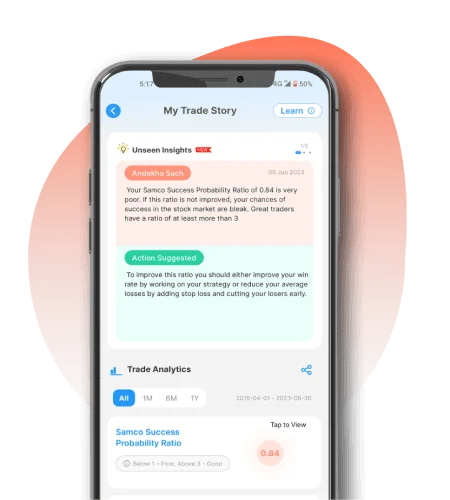Introduction
Volatility is one of the most fundamental concepts in the stock market. It refers to the magnitude and speed at which prices move up or down in a given timeframe. However, for options traders, understanding volatility takes on an even deeper significance, especially in the form of Implied Volatility (IV).
Implied Volatility plays a critical role in determining the pricing of options contracts. Whether you’re buying a call option on Nifty or writing a put on Reliance Industries, IV directly impacts how expensive or cheap an option premium will be.
In India’s growing derivatives market, understanding and interpreting IV can give traders an edge, helping them anticipate market moves, manage risk better, and pick strategies tailored to market conditions. This guide explains IV in detail, how it differs from historical volatility, its importance in options pricing, advanced metrics like IV Rank and IV Percentile, and how you can use it practically.
What is Implied Volatility?
Implied Volatility (IV) represents the market’s expectations for how volatile a stock or index will be in the future. Unlike historical volatility, which measures past price fluctuations, IV is forward-looking. It is derived from the prices of options using mathematical models like the Black-Scholes or Binomial pricing models.
IV is not directly observable. Instead, it is back-calculated from the current market prices of options. When options traders are willing to pay higher premiums for options, it implies they expect greater movement (volatility) in the underlying asset, and thus, IV is said to be high.
For example, if Nifty 50 is trading at ₹25,000 and the options premiums are expensive, that reflects a higher IV, suggesting that the market expects significant movement in the index, though it doesn’t specify in which direction.
In India, IV values are commonly seen on the NSE Option Chain, where you’ll often see IVs quoted beside the option premiums.
To simplify:
- High IV = Market expects big movements (up or down)
- Low IV = Market expects stability
So, IV is a market’s best guess of how volatile the asset might be during the life of the option. However, it’s important to remember that IV is based on market sentiment and perception — not guaranteed reality.
Implied Volatility vs Historical Volatility
To fully grasp IV, it helps to understand how it differs from Historical Volatility (HV).
| Feature | Historical Volatility (HV) | Implied Volatility (IV) |
|---|---|---|
| Definition | Measures past price movements | Predicts future price volatility |
| Data Source | Based on actual past stock prices | Derived from current option prices |
| Nature | Objective (factual) | Subjective (based on market sentiment) |
| Use Case | For analyzing past behavior | For forecasting & trading decisions |
| Example | Nifty moved ±1.5% daily over 30 days | IV suggests Nifty might move ±2% daily |
While HV tells you how volatile a stock has been, IV estimates how volatile it could be.
For instance, if a stock like Infosys has shown 1.2% daily movement over the last month, that’s its HV. But if its option prices imply a 2.5% movement in coming weeks, that’s its IV.
Both are useful:
- HV helps analyze past risk.
- IV helps price options and plan strategies.
Professional traders often compare the two. When IV is much higher than HV, it may indicate that options are overpriced, creating opportunities for option sellers. Conversely, if IV is unusually low compared to HV, it may offer value to buyers.
Importance of Implied Volatility in Options Trading
In the world of options trading, Implied Volatility is a central pillar — because it directly affects the option premium.
Let’s say the premium for a call option on TCS with a strike price of ₹3,800 is ₹120 when IV is 20%. If IV rises to 30%, the same option may be priced at ₹150, even if the stock price hasn’t changed. That’s because higher IV implies a greater chance of the stock moving significantly — making the option more valuable.
Key Impacts of IV:
- High IV = Expensive Options
Sellers benefit from collecting more premium. - Low IV = Cheaper Options
Buyers benefit from paying less premium.
However, one key misconception is that IV doesn’t indicate direction. A high IV doesn’t tell whether prices will rise or fall — only that they will likely move more.
This is why straddle and strangle strategies become popular in high IV environments — they aim to profit from large moves in either direction.
In India, stocks ahead of major events, like Infosys’ earnings or RBI monetary policy, usually see a spike in IV. Traders adjust their strategies accordingly.
Thus, understanding IV helps traders make smarter decisions: whether to buy or sell options, manage exposure, or adjust risk during volatile periods.
Advanced Concepts: IV Rank and IV Percentile
To make better sense of current IV levels, traders use two powerful metrics — IV Rank and IV Percentile
1. IV Rank:
This shows where the current IV stands in relation to its range over a certain period — typically the past one year.
Formula:
IV Rank = (Current IV – 1Y Low) / (1Y High – 1Y Low) × 100
Example:
- 1-Year High IV: 60%
- 1-Year Low IV: 20%
- Current IV: 40%
- → IV Rank = (40 – 20) / (60 – 20) = 0.5 = 50%
This means current IV is midway in its annual range.
2. IV Percentile:
This metric tells you the percentage of days in the past year that had IV below the current level.
Formula:
If the IV Percentile is 80%, it means that IV was lower 80% of the time, indicating relatively high current volatility.
How Traders Use It:
- High IV Rank/Percentile (Above 60–70%):
Options are expensive → Consider selling strategies like Iron Condor, Covered Call. - Low IV Rank/Percentile (Below 30%):
Options are cheap → Consider buying strategies like Long Straddle, Debit Spread. - Current IV: 40%
- → IV Rank = (40 – 20) / (60 – 20) = 0.5 = 50%
In Indian markets, experienced options traders on platforms like Samco, Zerodha, and Upstox actively track IV Rank/Percentile for stock options like HDFC Bank, TCS, or indices like Bank Nifty — especially during result seasons or budget weeks.
These metrics help in choosing the right strategy and timing entries/exits.
How Market Events Affect IV
Implied Volatility doesn’t move randomly — it often spikes ahead of key events and drops after the event passes.
This is especially true around:
- Quarterly earnings results (Infosys, TCS, HDFC, etc.)
- Budget announcements
- RBI monetary policy updates
- Major geopolitical developments
- Global cues like the US Fed meetings
Before such events, uncertainty is high, and traders expect large movements, causing IV to rise. Once the event is over, and the outcome is known, IV drops sharply. This is known as “IV Crush”.
For example:
Suppose HDFC Bank has earnings on Friday. On Thursday, its options may show IV of 45% (up from 30%). Traders expect big moves. But once the earnings are declared and the outcome is absorbed, IV may drop back to 30% or lower, causing option premiums to fall, even if the stock doesn’t move much.
This is why professional traders anticipate IV behaviour. Those who buy options just before an event may lose money even if they predicted the direction correctly, because IV drops post-event.
Understanding this dynamic helps avoid common mistakes and improve strategy selection.
Misconceptions About Implied Volatility
Many beginners misunderstand what IV truly means. Let’s clear some common myths:
1. High IV means bullish or bearish?
Wrong.
High IV only indicates expected movement, not direction. A stock with high IV can move up or down sharply the market simply anticipates action.
2. High IV = Good opportunity?
Not always.
High IV means options are expensive. Unless you expect even more volatility, buying such options may lead to losses due to IV crush.
3. IV is guaranteed prediction?
False.
IV reflects probabilities, not certainties. Just because IV suggests a 20% expected move doesn’t mean it will happen.
Understanding these misconceptions helps traders avoid overpaying for options or misinterpreting market sentiment.
Practical Use Cases for Retail Traders
So, how can a retail trader use Implied Volatility effectively?
1. Entry/Exit Timing:
- Buy options when IV is low — premiums are cheaper.
- Sell options when IV is high — collect more premium.
2. Strategy Selection:
- High IV: Favour selling strategies like Iron Condor, Credit Spreads, or Covered Calls.
- Low IV: Favour buying strategies like Long Straddle, Call/Put Buying, or Debit Spreads.
3. Event-Based Trading:
Plan trades around earnings, RBI meetings, or elections, expect IV spikes and plan exits before IV crush.
3. Risk Management:
Use IV to assess potential volatility and manage position size accordingly.
Retail traders in India can find IV data on platforms like Samco’s Option Chain, NSE, or third-party tools like Sensibull and Opstra.
Conclusion and Key Takeaways
Implied Volatility is a powerful tool in options trading. It helps predict market expectations, price options accurately, and choose optimal strategies based on current sentiment.
Whether you're buying a call on Nifty or selling puts on stocks, understanding IV, along with IV Rank and IV Percentile, can significantly enhance your decision-making.
But always remember: IV is not a crystal ball. Combine it with other technical indicators, trend analysis, and solid risk management for the best results.
Mastering Implied Volatility could be the edge you need in India’s dynamic options market.








 Easy & quick
Easy & quick